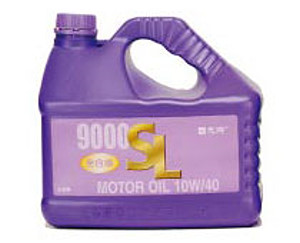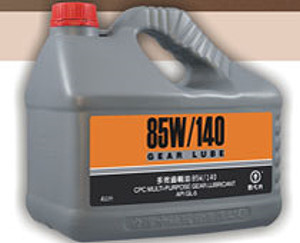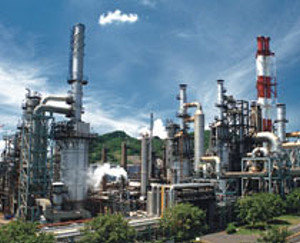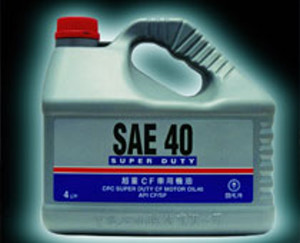Lubricants Knowledge
The API service classes have two general classifications: S for "service/spark ignition" (typical passenger cars and light trucks using gasoline engines), and C for "commercial/compression ignition" (typical diesel equipment). Engine oil which has been tested and meets the API standards. For example, the early standard of engine oil for gasoline cars (spark plugs engines) was SA, SB, SC…etc.
Ascending letters represent higher engine oil grades. The latest standard of the engine oil is SN, but SM level is still popular on the market. The latest standard of the engine oil for diesel cars(compression engines) is CJ-4. The engine oil of Single-grade S and C are completely different, they can not be mixed basically.Oils designed for diesel engine service might also meet gasoline engine service. For these oils the designation is "C" category first followed by the "S" category. "C" category oils have been formulated primarily for diesel engines and may not provide all of the performance requirements consistent with vehicle manufacturers' recommendations for gasolinefueled engines.
There are the classifications of the synthetic oil, the semi-synthetic oil, and the mineral oil on the market. However, based on the chemical standard, those classifications is meaningless. They are just for the commercial publicity. For example, the synthetic oil is contained only about 5% in the semi-synthetic oil, but the price is much higher than the mineral oil which is good for commerical profit.
The SN engine oil may be the synthetic oil or the mineral oil. However, it is based on the physical and chemical indicators such as the time of oil oxidation, abrasion resistance, mobility, and the capability of emulsifying and cleaning in order to identify whether an oil reached SN level. It is nothing dealed with the way of the oil refining.




The current and previous ILSAC standards and API Service Categories are listed here. Vehicle owners should refer to their owner's manuals before consulting these charts. Oils may have more than one performance level. For automotive gasoline engines, the latest ILSAC standard or API Service Category includes the performance properties of each earlier category and can be used to service older engines where earlier category oils were recommended.
The Society of Automotive Engineers (SAE) has established a numerical code system for grading motor oils according to their viscosity characteristics.
SAE viscosity gradings include the following, from low to high viscosity: 0, 5, 10, 15, 20, 25, 30, 40, 50 or 60. The numbers 0, 5, 10, 15 and 25 are suffixed with the letter W, designating they are "winter" (not "weight") or cold-start viscosity, at lower temperature. The number 20 comes with or without a W, depending on whether it is being used to denote a cold or hot viscosity grade.
The document SAE J300 defines the viscometrics related to these grades. Kinematic viscosity is graded by measuring the time it takes for a standard amount of oil to flow through a standard orifice, at standard temperatures. The longer it takes, the higher the viscosity and thus higher SAE code. The SAE has a separate viscosity rating system for gear, axle, and manual transmission oils, SAE J306, which should not be confused with engine oil viscosity. The higher numbers of a gear oil (e.g., 75W-140) do not mean that it has higher viscosity than an engine oil.
A single-grade engine oil, as defined by SAE J300, cannot use a polymeric Viscosity Index Improver (also referred to as Viscosity Modifier) additive. SAE J300 has established eleven viscosity grades, of which six are considered Winter-grades and given a W designation. The 11 viscosity grades are 0W, 5W, 10W, 15W, 20W , 25W, 20, 30, 40, 50, and 60.
These numbers are often referred to as the "weight" of a motor oil, and single-grade motor oils are often called "straight-weight" oils. For single winter grade oils, the dynamic viscosity is measured at different cold temperatures, specified in J300 depending on the viscosity grade, in units of mPa·s, or the equivalent older non-SI units, centipoise (abbreviated cP), using two different test methods.
They are the Cold Cranking Simulator (ASTMD5293) and the Mini-Rotary Viscometer (ASTM D4684). Based on the coldest temperature the oil passes at, that oil is graded as SAE viscosity grade 0W, 5W, 10W, 15W, 20W, or 25W. The lower the viscosity grade, the lower the temperature the oil can pass. For example, if an oil passes at the specifications for 10W and 5W, but fails for 0W, then that oil must be labeled as an SAE 5W. That oil cannot be labeled as either 0W or 10W.
For single non-winter grade oils, the kinematic viscosity is measured at a temperature of 100?°C (212?°F) in units of mm2/s (millimeter squared per second) or the equivalent older non-SI units, centistokes (abbreviated cSt). Based on the range of viscosity the oil falls in at that temperature, the oil is graded as SAE viscosity grade 20, 30, 40, 50, or 60. In addition, for SAE grades 20, 30, and 1000, a minimum viscosity measured at 150?°C (302?°F) and at a high-shear rate is also required. The higher the viscosity, the higher the SAE viscosity grade is.
The temperature range the oil is exposed to in most vehicles can be wide, ranging from cold temperatures in the winter before the vehicle is started up, to hot operating temperatures when the vehicle is fully warmed up in hot summer weather. A specific oil will have high viscosity when cold and a lower viscosity at the engine's operating temperature. The difference in viscosities for most single-grade oil is too large between the extremes of temperature. To bring the difference in viscosities closer together, special polymer additives called viscosity index improvers, or VIIs are added to the oil.
These additives are used to make the oil a multi-grade motor oil, though it is possible to have a multi-grade oil without the use of VIIs. The idea is to cause the multi-grade oil to have the viscosity of the base grade when cold and the viscosity of the second grade when hot. This enables one type of oil to be used all year. In fact, when multi-grades were initially developed, they were frequently described as all-season oil.
The viscosity of a multi-grade oil still varies logarithmically with temperature, but the slope representing the change is lessened. This slope representing the change with temperature depends on the nature and amount of the additives to the base oil. The SAE designation for multi-grade oils includes two viscosity grades; for example, 10W-30 designates a common multi-grade oil. The two numbers used are individually defined by SAE J300 for single-grade oils. Therefore, an oil labeled as 10W-30 must pass the SAE J300 viscosity grade requirement for both 10W and 30, and all limitations placed on the viscosity grades (for example, a 10W-30 oil must fail the J300 requirements at 5W). Also, if an oil does not contain any VIIs, and can pass as a multi-grade, that oil can be labelled with either of the two SAE viscosity grades. For example, a very simple multi-grade oil that can be easily made with modern base oils without any VII is a 20W-20. This oil can be labeled as 20W-20, 20W, or 20. Note, if any VIIs are used however, then that oil cannot be labeled as a single grade.
Breakdown of VIIs under shear is a concern in motorcycle applications, where the transmission may share lubricating oil with the motor. For this reason, synthetic oil or motorcycle-specific oil is sometimes recommended. The necessity of higher-priced motorcycle-specific oil has also been challenged by at least one consumer organization.